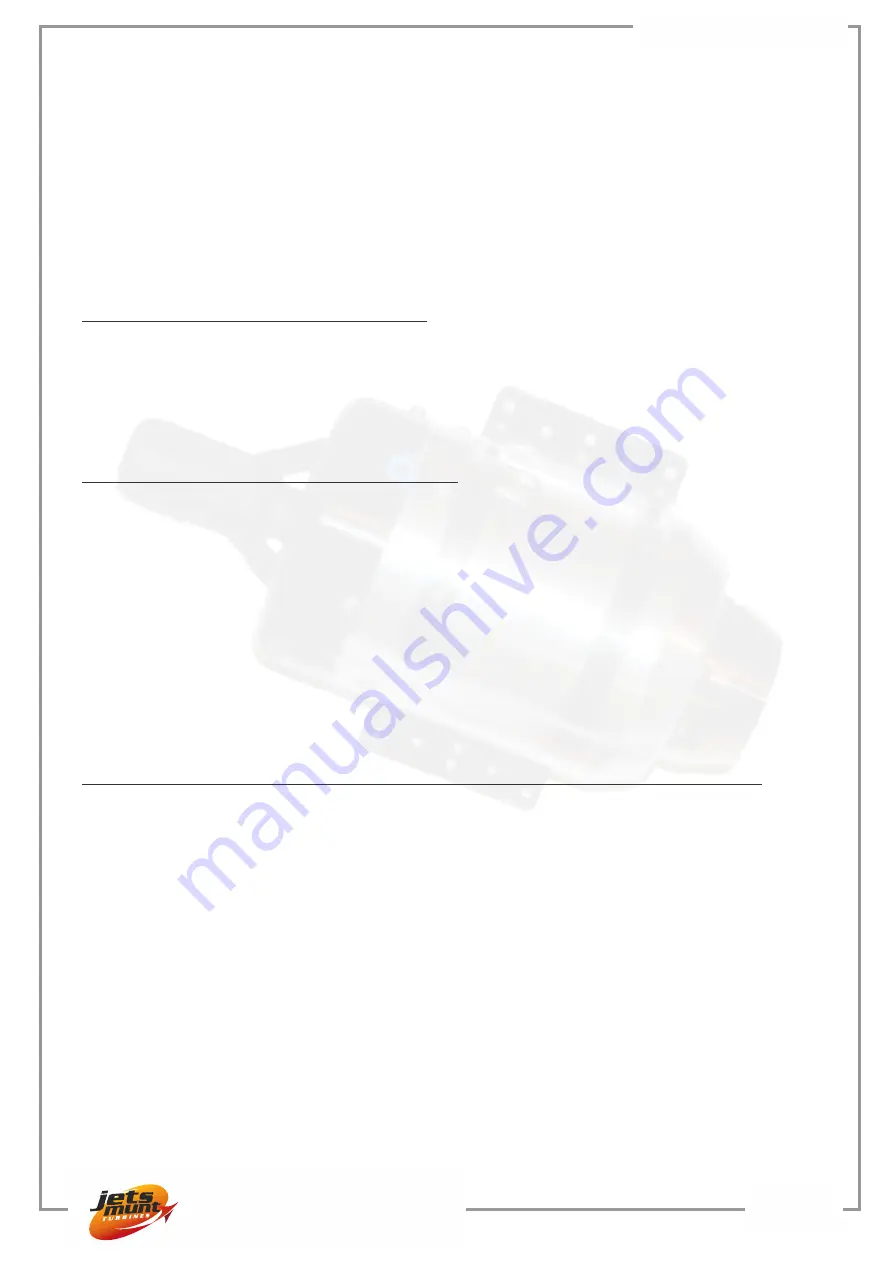
Page 21
JETS MUNT S.L
Once the ecu is satisfied that the shutdown/flameout was most likely caused by an
interruption of combustion, usually caused by an air bubble, the ecu triggers the quick restart
function, where the ignitor is energized to full voltage and the pump is started at a power
dependent of the current engine status (RPM and EGT). Once the ecu detects that the
combustion has reassumed, the starter power is set to full power to reach the idle rpm as
quickly as possible, and the pump power is increased accordingly to the real RPM increase,
allowing for delays caused by bubbles arriving to the engine. If after 10 seconds of restart
the ecu doesn’t detect a stable combustion, the procedure is aborted and the normal
cooldown initiated.
What the autorestart function will not do
-It will not restart the engine if the shutdown was caused by any fault other than a typical
flame out caused by air in the fuel system.
-It will not monitor and confirm flight conditions are optimum for a restart. Leaving the restart
to progress is the pilot responsibility and decision, depending on each particular case.
When should Re-Start function be Enabled?
Restart takes an average time of 15s to establish restored level of pre-shutdown power. It is
highly recommended that Re-Start only be used on airframes capable of sustaining enough
flight for the re-start to be complete. Some aircraft examples include: lightly loaded planes,
gliders, or multiengine planes.
It is highly advised a shutdown simulation be done before selecting Re-Start option in the
ECU Menu. Do this during a normal flight at a high altitude and throttle down to idle then
begin a 15sec count down. From this try to gauge if the aircraft can maintain flight during this
low power setting.
If your plane cannot maintain flight for a minimum of 15sec without engine power, do not
enable the restart function.
I’m flying my plane and the engine has shutdown with restart, what should I do:
·Think that the chances of that the engine restart are slim.
You don’t know why it has
shut down, so likely it will not restart, DO NOT RELY on it.
·Fly your plane.
Leave the throttle at mid setting and fly your plane for a dead stick landing.
·In case you see the plane begins to stall
or an uncontrolled landing is most likely,
IMMEDIATELY set the trim and stick to STOP position to abort the restart function. A crash
with the engine running normally ends with a fireball; a crash with the engine off is not likely
to catch fire. Do not use the “digital trims” to shut down the engine, use a dedicated switch to
be operated quickly.
·If the engine restart is initiated while on approach
, evaluate the speed/position of the
plane is still good for a safe landing, if so, land immediately, you don’t know why the engine
stopped and may stop again during a “go around” but this time the aircraft may not be in an
as favorable position. If the position/speed of the plane is not convenient, use the engine
power to go around and plan for a normal landing, BUT land as soon as possible.
·Once the plane is on the ground
, even in normal landing or crash landing, set the
transmitter in STOP position. The engine could restart and go to full power on its own; the
ecu does not know when the plane is on the ground.
VT80BL Instruction Manual



































